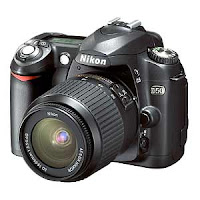Why do you want a camera? If it’s to take vacation snapshots etc, then a cheaper model would be fine. Decide how often you use it. The more you use it, the more likely you are to upgrade your camera. So, choose wisely. The budget is the next thing to consider about. Plan how much you’re willing to spend and compare it with the quality of the camera and never being hesitated to spend bit over, so that you will keep it much longer for sure.
Analog or Digital?
Both types have pluses and minuses.
Analog (film camera)
Now that all professionals are going digital, film cameras have the advantage of being kind of cheap compared to a digital camera of the same quality and performance plus film cameras do not have the issues with noise effects. On the other hand, development cost of pictures would be high if you're taking lots of photos.
Digital
The main advantage is the ability to view the pictures that you have taken right after taking the shot and it allows you to retake the shot if needed. Disadvantage is the prices of the cameras are pretty high comparing to the Analog cameras.
P&S vs SLR vs Bridge vs DSLR
- The process of point and shoot cameras (P&S) are just what they sounds like: you point your camera at the subject, zoom in or out, then press the button to take the picture. Such cameras require very little effort on the part of the photographer; because such cameras typically focus themselves and adjust themselves to various light conditions. (Ex. Sony Cyber-shot DSC-W350)
- An SLR (single-lens reflex) camera is what you see professional photographers use and it’s basically a film camera. With a DSLR (and many SLRs), you have total control over the photograph. You can adjust the shutter speed, the aperture alone, change the ISO speed as u please, SLR camera uses a movable mirror placed between the lens and the film to project the image. (Ex. Olympus OM-2)
- Bridge cameras are cameras which fill the market between the single-lens reflex cameras (SLRs) and the Point-and-shoot cameras. This type of cameras doesn’t have the feature of using interchangeable lenses. Like other cameras, most current bridge cameras are digital and many bridge cameras have long zoom lenses. With zoom ranges varying from wide-angle to telephoto, including macro) are feasible with one lens. Some cameras reach 500mm zooming limit and due to this reason, bridge cameras are also known as superzoom cameras. (Ex. Sony HX1, Cannon S90 etc)
- DSLRs are just like large point and shoot cameras. Unlike SLR cameras, you can use interchangeable lenses with DSLRs, which will add more quality to your photographs and it allows you to experiment various kind of techniques in different ranges like, macro, wide angle etc (Ex. Nikon D3000, Cannon EOS 40D)
